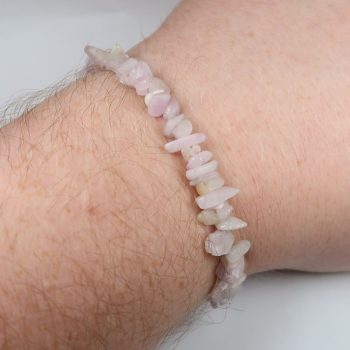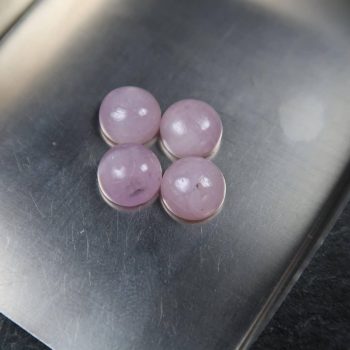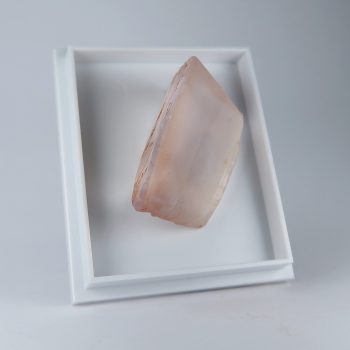Kunzite
Kunzite is a pink gemstone variety of Spodumene – there are other colours of Spodumene, but Kunzite is always a pale pink, gaining its colour from Manganese.
It is often heated or irradiated to improve its colour. The clearest and most colourful pieces will be faceted for jewellery making, or cut en cabochon.
Showing all 3 results
Uses and History
It was originally discovered in 1902, and named after George Frederick Kunz, the chief gemologist at Tiffany & Co.
It is often clear and free of inclusions and used as a gemstone. However, Kunzite is notorious for fading when exposed to sunlight.
Kunzite is strongly pleochroic and shows pink, clear, and violent hues depending on the angle from which it is viewed.
It is exclusively used for jewellery – typically faceted, but occasionally cut en cabochon.
Locales
Afghanistan, Australia, Brazil, Canada, Mexico, Pakistan, the USA.
Mineralogy
Hazards and Warnings
Almost all rocks, minerals (and, frankly, almost all other substances on earth) can produce toxic dust when cutting, which can cause serious respiratory conditions including silicosis.
When cutting or polishing rocks, minerals, shells, etc, all work should be done wet to minimise the dust, and a suitable respirator or extraction system should be used.
Translations
Arabic:
- كونزيت
Hindi:
Portuguese:
Bengali:
Indonesian:
Punjabi:
English:
Italian:
Russian:
French:
Japanese:
- クンツァイト
Spanish:
- kunzita
German:
- Kunzit
Korean:
- 쿤 자이 트
Thai:
Gujurati:
- કુંઝાઇટ
Mandarin and Traditional Chinese:
Urdu:
- کنزائٹ
Further Reading / External Links
- https://www.gia.edu/UK-EN/kunzite-quality-factors
- https://www.rocksandco.com/gemstone-information/kunzite/
- https://www.gemporia.com/en-gb/learning-library/gemstone/kunzite%20gemstone/
- https://www.gemstone.org/education/gem-by-gem/202-kunzite
- https://en.wikipedia.org/wiki/Spodumene#Kunzite
- https://www.mindat.org/min-2289.html



